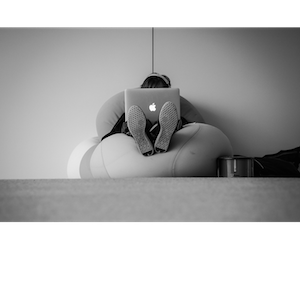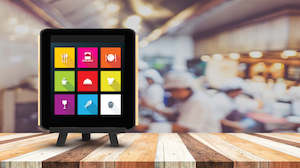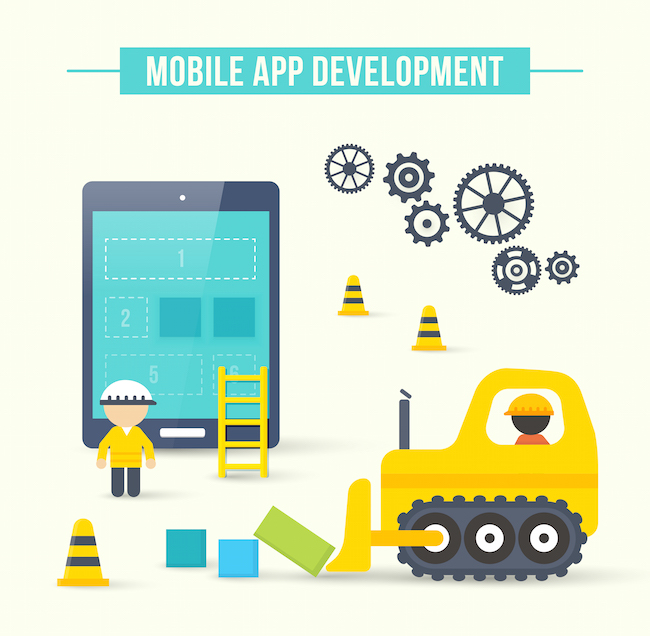
iBeacons & Mobile App - The Art of Attracting More Visitors to Museum and Art Galleries
This article was first published by Andrej Probst, an innovation manager, on Rozumy.sk, a technology blog covering innovation, management, banking and security.
Many museums and galleries are trying to find out ways to attract more visitors. It is obvious that institutes with better and more valuable items will attract a larger audience. However, what would you suggest the smaller museums and galleries do?
There are various options. Some of them are:
- Free entry
- Interactivity
- Competitions
- Complete information about the pieces
- etc.
The story improves the appeal of the art piece
Let’s focus on one of the aforementioned options i.e. providing more information about the art pieces. People see an art piece differently if they know its history and story as compared to when they know nothing about it.
We would look at The Mona Lisa differently if we do not know that the eyes of the girl in the picture are going to follow us around the room. We would probably just ignore it and move on to the next picture without even noticing it.
Thus, we have to look for ways to provide more information about the piece to an average visitor.
How information finds its way to the minds of the visitors
-
In front of the piece, there is the author's name along with the date when it was painted and how it was named.
-
Next to the basic information, there is often another frame in which we can find a detailed account of the piece. However, there are numerous problems with such descriptions. If your visitors come from different countries, you need to place multiple descriptions, each in a different language. The next problem is people with diverse interests expecting diverse information. A child will expect something different from what an art critic does.
-
The institute offering audio guides to the visitors. There are codes next to the art pieces and typing these codes into the electronic guide will make it talk about the piece. The audio guide is better than written text as it can make its way around language mutations as well as provide different content for different groups of people. However, manual labour is required to install and maintain an audio guide.
-
A guide accompanying a group of visitors. He's showing them the pieces, providing the relevant information and answering potential questions. All the visitors have to do is watch and listen. They need, however, to understand the language of the guide and follow a linear track

How about look at an alternative way?
Let the iBeacon & smartphone be the guide - A smarter way of providing information and interacting with visitors
Imagine that you are visiting an exhibition and you have a mobile application on your smartphone which includes a list of different galleries and exhibitions. You enter the gallery and the phone immediately notifies you that you are in a particular gallery about which it has some information. The app can buy tickets for you and even advise you to put on your headphones and venture on a guided tour.
The guide here will be your smartphone equipped with iBeacon technology and a custom-built mobile application.
- Automatically recognises the room - When visitors enter a room, the mobile app immediately recognize which room they are in and starts playing information about the respective pieces in that room. The information is chosen in a way to make it appealing to them.
- Know the visitors - The app can also be optimized to know whether a visitor is an art critic or a simpleton on vacation. It also knows which languages he speaks. Thus, it can correctly pick the most appropriate available content. When the visitors get closer to a piece that attracts their attention, the app notices this and begins to feed them all the information about it. They will get to know everything that they wanted to know about it. They can freely walk around the gallery and simply stop in front of the pieces that attract them.
- Gather feedback - When the visitors leave a room, the mobile application can ask them for additional information which may include: A specific question. For instance, what was interesting about a particular item that they liked the most? This will help the mobile app to collect the feedback for future reference. A quiz about the pieces in that room. A notification about missing out on an interesting item. ...and more..
Not only this information helps to provide better user experience, it helps the museums or art galleries to know more about their visitors. They can use the info to deliver better services.
Would you like something like this?
You are exercising your free will. You can choose which items you'd like to see and you will always get the relevant information. You don't need human guides anymore. You can take your whole family to the gallery and let the app guide them.
Micro-location technology
There are numerous technical capabilities regarding micro-locations. Nowadays, micro-location scanners have the ability to track visitors with such precision that the visitor can access all the information about a particular piece.
There are iBeacons, small electronic receivers (BLE: Bluetooth Low Energy) operating on AA batteries which also send information about their location. If you have multiple iBeacons in a single room, you can (through triangulation of the signal strength) pinpoint the location of a certain place with a precision of about 8 inches. And that's more than enough!
iBeacons can communicate with each and every mobile platform: iOS, Android, even Windows Phone. The smartphones being sold today even contain the BLE. Micro-locations can even give information to the management of the gallery. Based on the collected data, they can pinpoint the pieces which attracted the most visitors. The curator can then help reorganise the pieces.
How to do it?
If we want this service to be offered to the people visiting galleries and museums, we need to take care of a few prerequisites first:
- Create a mobile application which can track location and show relevant information based on that location.
- Create content which will be provided through the mobile application.
- Secure the micro-location of a certain place by an implementation of iBeacons.
And that’s how you attract more people including young people to the museums and art galleries by providing a one-of-a-kind experience.

If you know of other interesting usecases of iBeacon technology, Contact us or tweet to us at @TeskaLabs
Photo credit: Pixabay
Most Recent Articles
- A beginner-friendly intro to the Correlator for effective cybersecurity detection
- Inotify in ASAB Library
- From State Machine to Stateless Microservice
- Entangled ways of product development in the area of cybersecurity #3 - LogMan.io
- Entangled ways of product development in the area of cybersecurity #2 - BitSwan
You Might Be Interested in Reading These Articles

Application Security Issues for HTML5-based Mobile Apps
HTML is no longer restricted to just websites. With its latest edition, HTML5, the markup language family has now become a popular choice for mobile applications. After gathering the relevant data and researching, Gartner predicted two things; firstly, HTML5 would be the most commonly used language for mobile applications in 2015 and secondly, HTML5-based hybrid mobile app using technologies such as PhoneGap, Codova or React Native reach up to be 50% of all mobile apps 2016.
Published on March 01, 2016

4 Common Mobile Point of Sale (POS) Security Issues Affecting Retailers That POS Providers Need to Act On
As mobile point-of-sale applications and systems are picking up speed at retailers around the world replacing traditional one, they become appealing targets for cybercriminals allured by the amount of consumer data entered in POS systems whether through unauthorized access, mobile malware or hacking the backend.
Published on January 03, 2017

5 Things to Look for in an Enterprise Mobile Development Platform Solution
Today many enteprises are looking to have their own mobile applications. With the right solution, you can build a mobile app that will fit your organization’s needs like a glove and be in the driver’s seat of the development.
Published on September 01, 2015